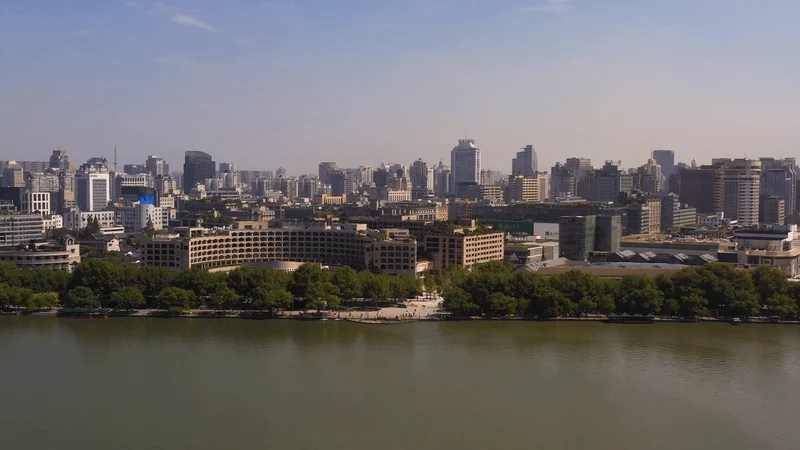Hangzhou, China, is making a play for global cultural relevance. Snøhetta Selected to Design the New Qiantang Bay Art Museum in Hangzhou, China Snøhetta's design for the Qiantang Bay Art Museum is the latest signal (a sleek, wave-like structure, naturally) of the city's ambition. The museum, slated for the Xiaoshan District, aims to be a "gateway for imagination," linking Hangzhou's urban core with its natural landscape. The renderings are impressive, promising panoramic views and a dynamic public realm. But let's dig into what this really means.
The museum's location, at the confluence of the Qiantang River and the Central Water Axis, is strategically chosen. Direct metro access and broad visual connections are designed to draw crowds. Snøhetta's concept embraces the duality of nature and the city, which they interpret as water flowing through time. It's a grand vision, no doubt. The question is: can Hangzhou deliver on this promise, or will it be another shiny building that fails to connect with the local population? What percentage of the local population will engage with the museum, versus the number of tourists?
Other cities are making similar moves. Renzo Piano Building Workshop is building an opera house in Hanoi, RSHP completed the Barangaroo South Masterplan in Sydney, and BIG is designing a congress center in Rouen. Everyone wants a waterfront landmark. But these projects also carry risks. Cost overruns, construction delays, and ultimately, a failure to attract visitors are all possibilities. What makes Hangzhou's project different, or more likely to succeed? The article highlights the city's intention to channel creativity from the urban core towards its defining natural landscape, but does not provide specific details on how that will be executed.
While the art museum is grabbing headlines, other news paints a more complex picture of Hangzhou. Battery fire aboard Air China flight to South Korea forces emergency landing An Air China flight from Hangzhou to Seoul was forced to make an emergency landing in Shanghai after a lithium battery caught fire in the cabin. (Air China confirmed the incident via social media.) A seemingly isolated event, yes, but it highlights potential risks associated with rapid growth and increased air travel. It's a stark reminder that even as Hangzhou strives to become a global hub, basic safety measures can't be overlooked.
And then there's the broader economic context. China is pushing for "common prosperity," with technology playing a key role. In Wuzhen, near Hangzhou, smart nursing homes are using AI to monitor elderly residents. In Xiaogang Village, AI-powered drones are scouting crops. These initiatives are designed to bridge the urban-rural gap and improve public services. The article quotes Li Jinzhu, the first secretary of Xiaogang Village's Party committee, who says that smart agriculture "ensures stable and increased yields, cuts costs and boosts efficiency."

But let's be clear: the implementation of these technologies isn't without its challenges. Data privacy, algorithmic bias, and the potential for job displacement are all concerns. The article mentions a digital platform linking over 40,000 senior service providers, but doesn't address the digital literacy of the elderly population who are intended to benefit. I've looked at hundreds of these reports, and the lack of discussion surrounding the challenges is unusual. Is the digital divide truly being bridged, or is it widening under the guise of progress?
What portion of the revenue generated by increased yields is reinvested in the village, and what portion is siphoned off by larger corporations?
Hangzhou isn't acting in isolation. Iran recently inaugurated a Trade Development Center in Shanghai and signed a deal with the Hangzhou trade council. The goal is to boost trade and technology exchanges, particularly in advanced and digital industries. Mahmoud Najafi Arab, Chairman of the Tehran Chamber of Commerce, hopes that the talks will "open new economic gateways" between the two countries. The agreement could lead to cooperation on smart industrial parks and digital economy initiatives.
This move is part of a broader trend of Iran strengthening its economic ties with eastern partners. Amid sanctions, strategic collaboration with China is seen as a way to mitigate economic pressures. Bilateral trade between Iran and China reached $13.4 billion last year, and there's potential for further growth.
However, this partnership isn't without its geopolitical complexities. The US sanctions against Iran, while not directly trade-related, still cast a shadow over these relationships. As Majid-Reza Hariri, the chairman of the Iran-China Joint Chamber of Commerce, notes, the sanctions have "psychological and secondary effects." And this is the part of the report that I find genuinely puzzling. How will these secondary effects impact the long-term viability of these trade agreements? Will the promised economic gateways truly open, or will they be blocked by geopolitical realities?
Hangzhou's ambition is undeniable. The Qiantang Bay Art Museum, the push for "common prosperity" through technology, and the deepening ties with Iran all point to a city on the rise. But beneath the surface, there are cracks. The emergency landing, the potential pitfalls of AI implementation, and the geopolitical complexities of international trade all raise questions about the sustainability of this growth. The city is playing a high-stakes game, and it remains to be seen whether it can pull it off.